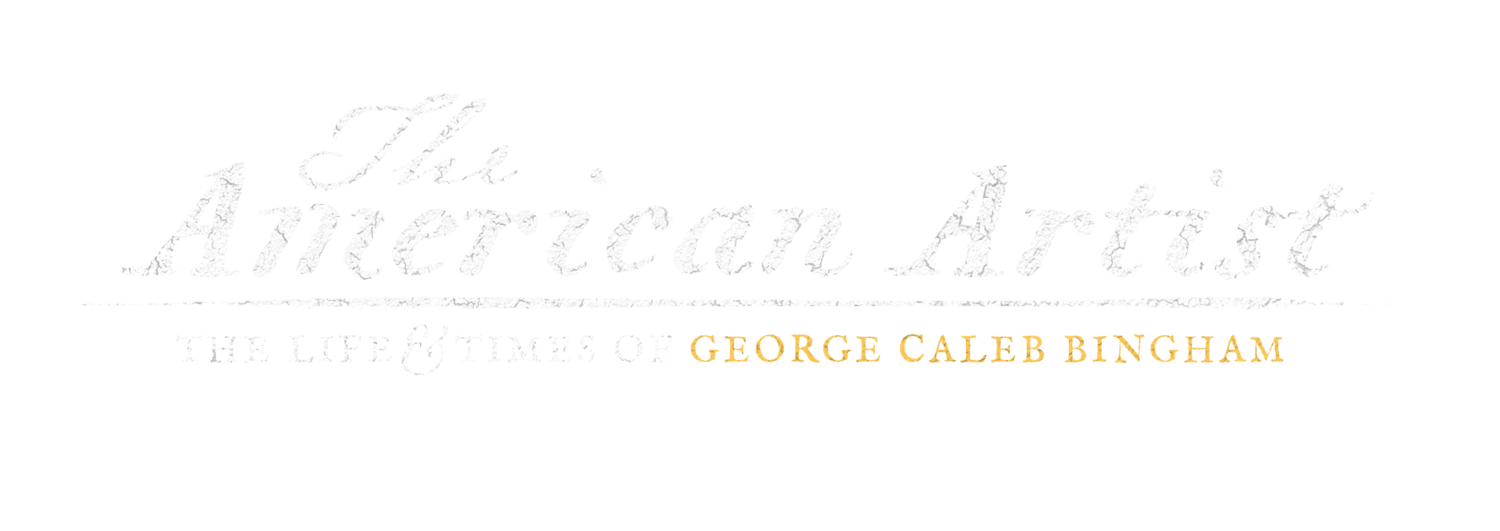One of the fascinating aspects of George Caleb Bingham’s story -- telling it and hearing it -- is being transported back into the Missouri of his lifetime, in particular around the areas of Franklin and Arrow Rock where he grew up.
During his lifetime Bingham witnessed his adopted state grow from a frontier territory to an industrious and productive state serving as the jumping off point for settling the rest of the American west.
J.P. Sites Gun Shop in Arrow Rock. Photo courtesy of Friends of Arrow Rock.
To chronicle the story of his growth from boyhood to manhood, from apprentice to artist, in our documentary is to find yourself immersed in his world. (You can watch the trailer here.)
If you were to visit the Missouri Territory soon after the War of 1812, you would find its population growing rapidly, driven by the federal government’s emphasis on taming the land in the areas that made up a large part of the Louisiana Purchase of 1803.
You would find the Missouri landscape diverse and beautiful, affordable and plentiful. Families and individuals from eastern states and abroad are descending upon the area, seeking opportunity, a place to make a home. Throughout the 1810s settlers continue to pour into Missouri in the largest rush of immigration in American history at that time.
Production Still, The American Artist: The Life & Times of George Caleb Bingham. Photo courtesy of Brett Pruitt, East Market Studios.
Industry and trade are growing with the territory and across the young nation. Land speculation is running rampant. Economic boom is followed by economic bust leading to the Panic of 1819.
This is also the year that Bingham and his family, having fallen on hard times, move to the Missouri Territory. It takes a year or two for the economic troubles to reach the Missouri Territory, so when the Bingham family arrives, small towns are still springing up all across the state, some booming with rapid growth for a time before leveling off or dying while others not only survived but and thrived.
In 1821 Missouri enters statehood and if you were living in Franklin near the banks of the Missouri River then, you would find yourself immersed in a distinctly American steamboat culture.
Cannon fire of salutations ring out as you rush to river’s edge to watch a steamboat -- specifically designed for the Missouri river so it’s lighter and faster than those on the Ohio and Mississippi Rivers -- carrying passengers and goods such as whisky, flour and sugar along the mighty river. The river is also dotted with flatboats and keelboats, though their numbers are dwindling as steam power rises to prominence.
But Franklin is somewhat protected by a diverse economic position. To the west, the Great Plains and the Southwest are important to the growth of the town thanks to the Santa Fe Trail, which winds from Missouri to New Mexico and proves such a lucrative trade route that eventually it almost single-handedly pulls the entire state out of depression.
Living in towns like Franklin or Arrow Rock in the 1800s, you have several options for your livelihood: farmer (most likely growing hemp, tobacco and to a lesser degree wheat or corn), dry goods retailer, or blacksmith, among others.
In fact, it’s quite possible that you would wear several hats and be skilled at everything from raising livestock to carpentry to shoeing horses to building a wagon. Or, if you have the proper training, lawyers, judges, doctors and ministers are always in demand.
Arrow Rock Public Hall.
Then again, perhaps you serve your fellow Missourians as their representative in politics and government, helping shape and define the young state. The pro-slavery Democratic party rules the state for the most part, but in 1836 to the Whig party forms to counter the Democrats by opposing the expansion of slavery.
Living in the young state, you witness slavery almost daily. Maybe not to the degree found in deep southern states, but enough to know it’s an important force of your economy and your culture. Such a large force, in fact, that slavery will be the basis for the perhaps the greatest American novel, soon to be written by a young man hailing from Hannibal, Missouri.
Where you hail from is important, though it isn’t necessarily where you will stand for long. Chances are you and many people you know will move around quite often during this time period. Sometimes out of opportunity, sometimes out of necessity. Your horizons will go beyond Missouri and even America. Between 1835 and 1877, Bingham himself lived in or visited almost 20 different cities in America and Europe.
But wherever he went, Bingham always took little bit of Missouri with him, always eventually returning home to Missouri.
To us -- filmmakers who’ve made a name for ourselves by creating documentaries that are historically accurate right down to the buttons on a Virginia confederate soldier’s uniform -- it’s been a wonderful trip, journeying back to Bingham’s time to tell his story.
We hope you’ll enjoy the trip back to Bingham’s Missouri when you see our film later this year.
We also recommend that you experience Bingham’s hometown of Arrow Rock first hand. It’s truly a destination town, filled with history, architecture and the arts. You can find information about visiting Arrow Rock by checking out the web site for our partners, the Friends of Arrow Rock.
If you would like to read more details about Bingham’s life and times in Arrow Rock, you can download this article from the Friends of Arrow Rock site.
For sneak previews, showings and exclusive content on history, art and filmmaking, please join our mail list.




